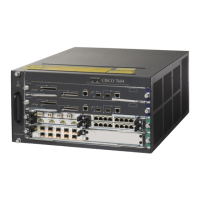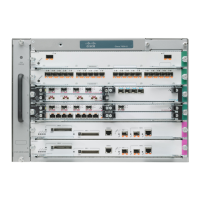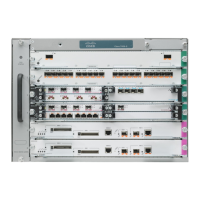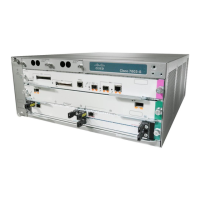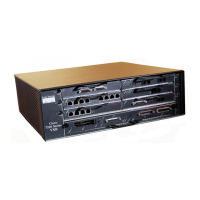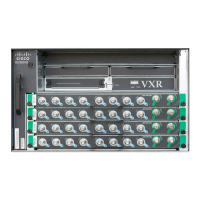32-43
Cisco 7600 Series Router Cisco IOS Software Configuration Guide—12.1E
78-14064-04
Chapter 32 Configuring PFC QoS
Configuring PFC QoS
Creating a Policy Map Class and Configuring Filtering
Note • With an MSFC2, Release 12.1(13)E and later releases support the class class_name protocol policy
map command, which configures NBAR and sends all traffic on the Layer 3 interface, both ingress
and egress, to be processed in software on the MSFC2. To configure NBAR, refer to this publication:
http://www.cisco.com/univercd/cc/td/doc/product/software/ios122/122newft/122t/122t8/dtnbarad.htm
Earlier releases provide PFC QoS and Layer 3 switching in hardware, which prevents support of the
class class_name protocol policy map command except for traffic being processed in software on
the MSFC.
• PFC QoS does not support the class class_name destination-address, class class_name
input-interface, class class_name qos-group, and class class_name source-address policy map
commands.
• PFC QoS does not detect the use of unsupported commands until you attach a policy map to an
interface (see the “Attaching a Policy Map to an Interface” section on page 32-49).
Policy maps can contain one or more policy map classes. Enter one of these class commands to create a
policy map class and configure filtering in it.
To create a policy map class and configure it to filter with an already defined class map, perform this
task:
To create a policy map class and a class map simultaneously, perform this task:
Note • Put all trust-state and policing commands for each type of traffic in the same policy map class.
• PFC QoS does not attempt to apply commands from more than one policy map class to traffic.
Command Purpose
Router(config-pmap)# class class_name
Creates a policy map class and configures it to filter with a
class map (see the “Creating a Class Map” section on
page 32-40).
Note PFC QoS supports class maps that contain a single
match command.
Router(config-pmap)# no class class_name
Clears use of the class map.
Command Purpose
Router(config-pmap)# class class_name {access-group
acl_index_or_name | dscp dscp_1 [dscp_2 [dscp_N]] |
precedence ipp_1 [ipp_2 [ipp_N]]}
Creates a policy map class and creates a class map and
configures the policy map class to filter with the class map.
Note This command creates a class map that can be used in
other policy maps.
Router(config-pmap)# no class class_name
Clears use of the class map (does not delete the class map).

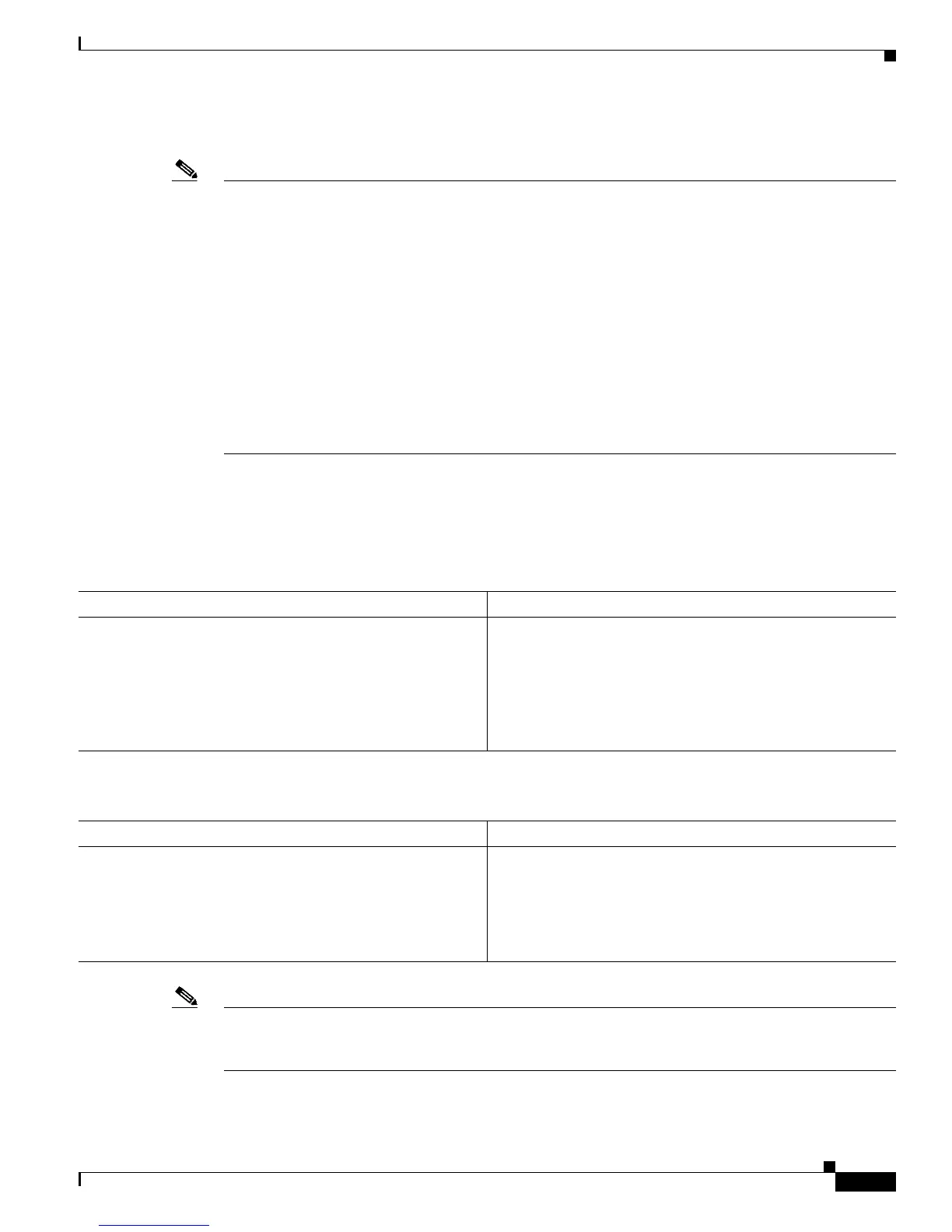